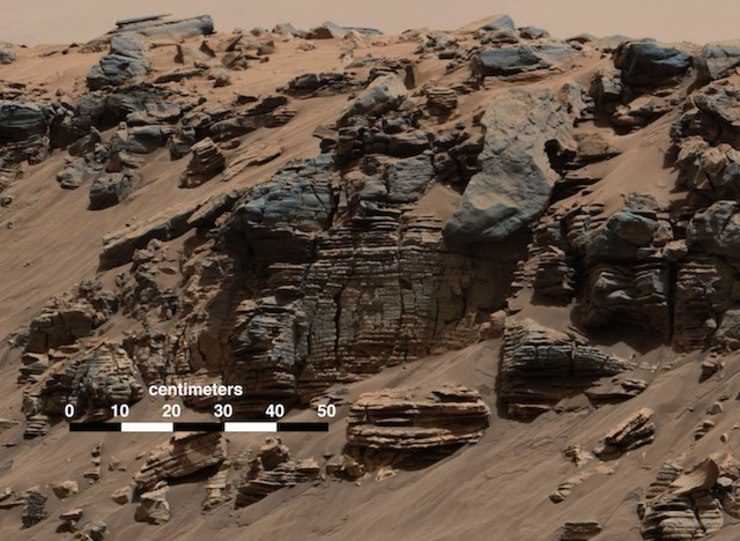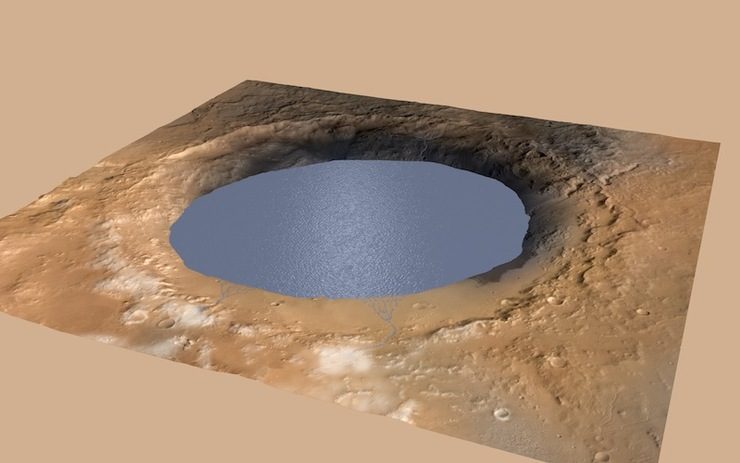SUMMARY
This is AI generated summarization, which may have errors. For context, always refer to the full article.

MIAMI, USA – A mountain on Mars may have built up over time from lake sediments, according to NASA scientists who have been studying observations from the Curiosity rover scouring the Red Planet.
The latest analysis is based on rocks discovered at the lower edges of Mount Sharp, which is located, rather oddly, in the midst of a crater on Earth’s neighboring planet.
“Gale Crater had a large lake filling the bottom of the 96-mile-across (155 kilometer) crater, perhaps even a series of lakes,” said Michael Meyer, Mars Exploration Program lead scientist at NASA.
“This lake was large enough that it could have lasted millions of years, sufficient time for life to get started and thrive, sufficient time for lake sediments to build up and form Mount Sharp.”
While scientists are still not sure how long Mars was wet for any given spell through history, they were stunned to find slanted rocks and soil that point to the existence of a lake bed in the crater, said Curiosity project scientist John Grotzinger of the California Institute of Technology.
Known as inclined strata, this kind of geological formation is key for understanding how a planet formed but is hard to find distinct examples of, even on Earth, he told reporters.
“When we saw the inclined strata and they were dipping toward Mount Sharp that was really a great surprise,” he said.
Curiosity’s pictures and data collected from the Martian soil in the lowest sedimentary layers of Mount Sharp, which reaches a height of about 3 miles (5 kilometers), has helped scientists see the remnants of how rivers once carried sand and silt to the lake, depositing sediment at the mouth of the river.
This process would have repeated itself again and again to form a delta.
“After the crater filled to a height of at least a few hundred yards (meters) and the sediments hardened into rock, the accumulated layers of sediment were sculpted over time into a mountainous shape by wind erosion that carved away the material between the crater perimeter and what is now the edge of the mountain,” NASA said in a statement.
Warmer, wetter

Billions of years ago, the planet is believed to have been much warmer, with a thicker atmosphere that would have supported liquid water and potentially some form of life.
The latest data “tends to push warm and wet Mars a little later in its history than we previously thought, to about three and a half billion years ago,” give or take a few hundred million years, said Ashwin Vasavada, Curiosity deputy project scientist at NASA’s Jet Propulsion Laboratory in Pasadena.
“The part that we are not sure of is whether it was continuous or episodic,” he told reporters.
The $2.5 billion US space agency rover has been exploring the area since it landed in Gale Crater in 2012, and has traveled 5 miles (8 kilometers) from its touch down site.
As the rover climbs higher, scientists hope to learn more about how the mountain formed, and what was happening billions of years ago on Mars, which is now cold and dry with a very thin atmosphere.
“We would like to see if there are times when the lake freshens, if there are time when the lake becomes salty, if there are times when it evaporates completely,” said Grotzinger.
“That will really begin to tell us about the climate history on Mars at a higher level.” – Rappler.com
Add a comment
How does this make you feel?
There are no comments yet. Add your comment to start the conversation.